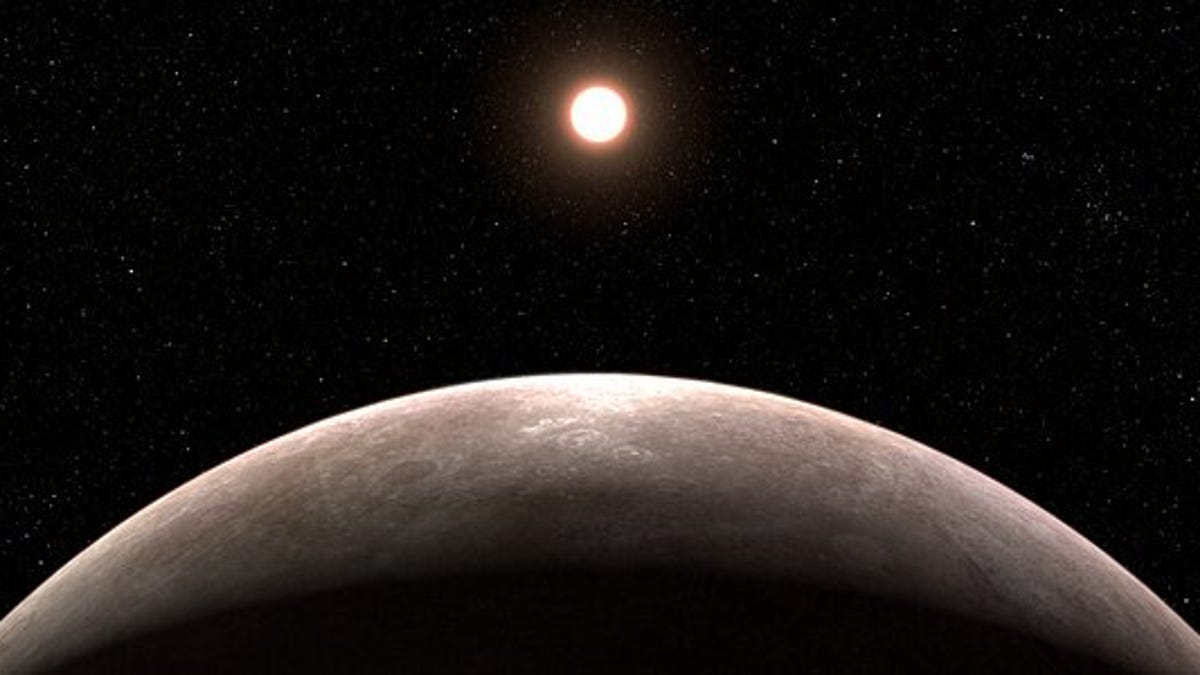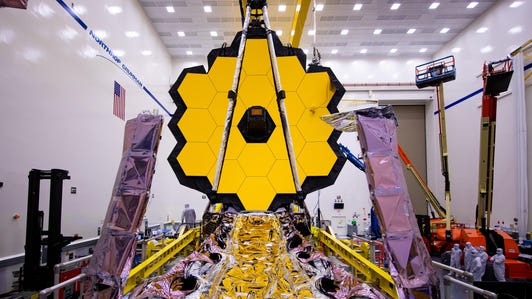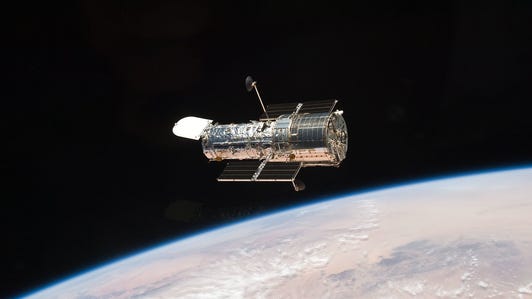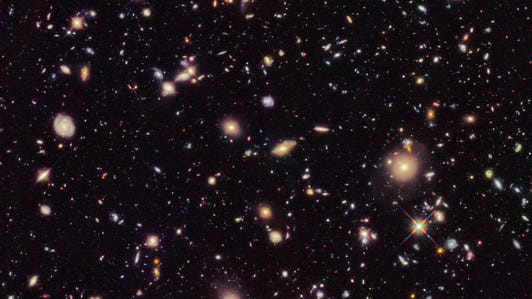
An illustration of the exoplanet LHS 475 b.
NASA, ESA, CSA, L. Hustak (STScI)
NASA and the European Space Agency’s next-generation space observatory has been operating for less than a year, but on Wednesday, the James Webb Telescope team announced the first exoplanet to be confirmed using the instrument.
The rocky, Earth-like world LHS 475 b is almost exactly the same diameter as our planet and located just 41 light-years away, which is very close on a cosmic scale.
“There is no question that the planet is there. Webb’s pristine data validate it,” said Jacob Lustig-Yaeger, a research team lead from the Johns Hopkins University Applied Physics Laboratory, in a statement. “With this telescope, rocky exoplanets are the new frontier.”
The team used Webb to observe the system around red dwarf star LHS 475 after data from NASA’s Transiting Exoplanet Survey Satellite (TESS) hinted there may be a planet circling the small sun.
There’s been lots of excitement among astronomers over Webb’s potential for taking a closer look at exoplanets to analyze the composition of their atmospheres, which may hint at the potential for habitability and even signs of life.
In the case of LHS 475 b, however, the scientists say they need more data to be able to draw any conclusions about the planet’s atmosphere.
Hubble and James Webb Space Telescope Images Compared: See the Difference






+9 more
See all photos
“There are some terrestrial-type atmospheres that we can rule out,” Lustig-Yaeger explained. “It can’t have a thick methane-dominated atmosphere, similar to that of Saturn’s moon Titan.”
Scenarios that haven’t been ruled out include a world with no atmosphere, or one that’s 100% carbon dioxide. Either option clearly isn’t good for the prospect of life as we know it.
There are some other pretty serious strikes against the potential habitability of LHS 475 b. While its star isn’t nearly as hot as our sun, the planet orbits so close in that it completes an orbit in just two days and has temperatures that are likely a few hundred degrees hotter than Earth.
Nonetheless, the find represents a major milestone for Webb, according to team co-leader Kevin Stevenson.
“It is only the first of many discoveries that it will make.”
